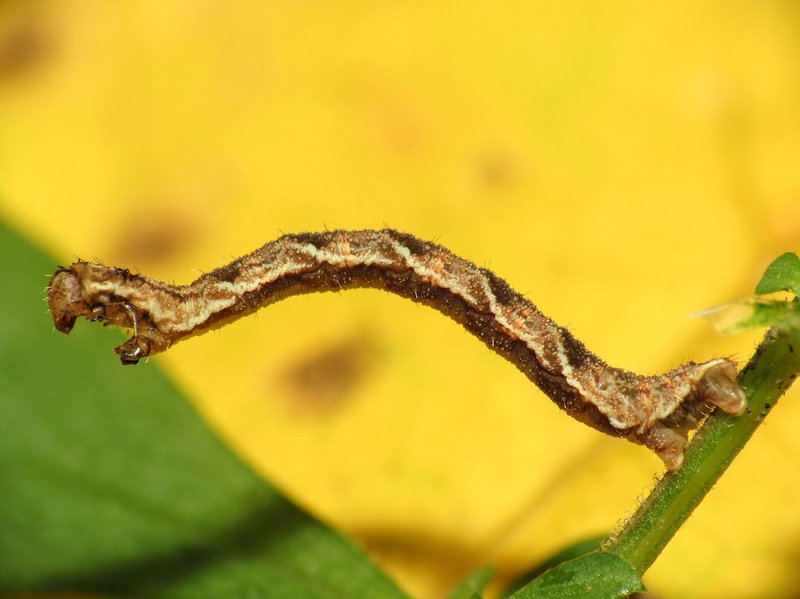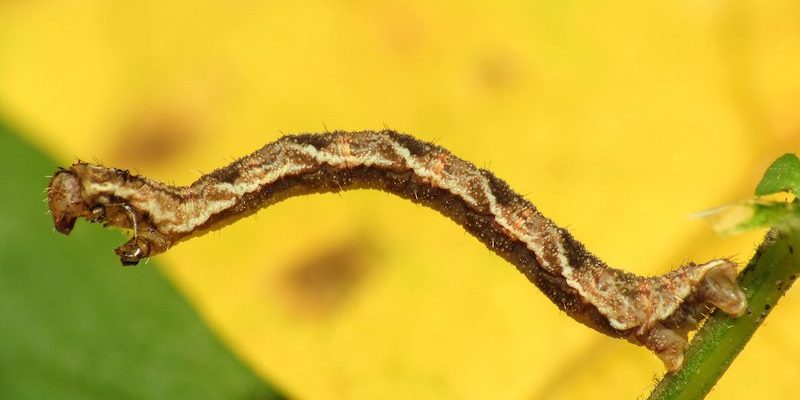
Inchworms, or **measuring worms**, are actually the larvae of moths. They get their name from their unique way of moving, which resembles the action of measuring something. You might have noticed them in your yard, and even though they seem harmless, they can cause big problems for farmers. The truth is, inchworms can play both beneficial and harmful roles. Understanding their dual nature is essential, especially if you’re considering how to manage them in your garden or farm. So, let’s unfold this inchworm mystery together!
What Are Inchworms?
Inchworms are the larval stage of several types of moths, including the **geometer moths**. They typically have a distinctive green or brown color, which helps them blend into their surroundings. This camouflage is their first line of defense against predators. When you see them inching along, you might think of them as tiny little acrobats, but there’s a method to their movement. They move by looping their bodies, which makes it look like they’re measuring the distance they travel.
While inchworms may remind you of playful garden critters, they’re part of a broader ecosystem. Most species are herbivorous, meaning they primarily feed on the leaves of plants. Their diet can impact plant health, especially in an agricultural setting. You might wonder how these little guys contribute to the ecosystem beyond just munching on leaves. Well, they’re also part of the food chain, serving as sustenance for birds, rodents, and other wildlife.
How Do Inchworms Affect Agriculture?
Inchworms can be a double-edged sword in agriculture. On one hand, they provide a food source for birds and beneficial insects. This can help with pollination and pest control. However, on the flip side, they can become significant pests if their populations explode. When this happens, they can cause extensive damage to crops and plants, leaving farmers to pick up the pieces.
Farmers often see the most damage during the spring and early summer when inchworms are actively feeding. Young plants can be particularly vulnerable during this time. A small infestation may not seem like a big concern, but it can quickly escalate into a major issue if left unchecked. You might be surprised to learn that some farmers have reported losing entire fields due to inchworm damage.
Signs of Inchworm Infestation
Recognizing an inchworm problem early on can save you a lot of trouble later. Some signs to look out for include:
- Defoliation: If you notice that leaves are being eaten or stripped bare, inchworms could be the culprits.
- Webbing: Some inchworm species spin silk threads, creating a web-like appearance on plants.
- Caterpillar sightings: If you see small, greenish or brownish caterpillars on your plants, it’s likely that inchworms are present.
- Frass: This is the technical term for insect droppings. Finding tiny pellets near your plants can indicate a pest problem.
If you spot any of these signs, it might be time to investigate further. Early action can often make a big difference in controlling these pests.
Natural Predators of Inchworms
One of the best defenses against inchworm infestations is to rely on natural predators. Birds, wasps, and certain types of beetles love snacking on inchworms. By fostering a diverse ecosystem in your garden, you can create an environment that encourages these natural pest controllers.
Here are some common natural predators you might find helpful:
- Birds: Many species of birds, including sparrows and bluebirds, will feast on inchworms.
- Parasitoid wasps: These tiny wasps lay their eggs inside inchworms, eventually killing them.
- Ladybugs: While they’re famous for eating aphids, ladybugs also enjoy munching on small caterpillars.
Increasing the variety of plants in your garden can attract more beneficial insects. Think of it as throwing a party for nature—more guests mean more fun, or in this case, better pest control!
Are There Safe Pest Control Options for Inchworms?
If you find that the natural approach isn’t enough to manage inchworm populations, you might be considering some pest control options. Fortunately, there are several safe methods to tackle inchworm issues without harming beneficial insects.
1. **Neem Oil:** This natural pesticide disrupts the life cycle of inchworms. Just mix it with water and spray it on infested plants.
2. **Bacillus thuringiensis (Bt):** This natural bacterium targets caterpillars. When they ingest it, it disrupts their digestion, leading to a quick demise.
3. **Handpicking:** It might sound old-fashioned, but sometimes the best solution is to pick them off your plants. It’s simple, and you can do it while enjoying your garden.
You might be wondering how effective these methods really are. In many cases, combining these strategies can significantly reduce inchworm populations without the negative effects of harmful chemicals.
Preventive Measures to Manage Inchworms
Preventing inchworm infestations is always better than dealing with a full-blown problem. Here are some easy steps you can take to keep inchworms at bay:
- Regular Monitoring: Keep an eye out for early signs of infestations so you can take action quickly.
- Healthy Soil: Maintaining rich, healthy soil encourages strong plants that are better able to withstand pest attacks.
- Companion Planting: Some plants naturally repel inchworms. For example, planting **marigolds** can help deter them.
By being proactive, you can create a garden environment that not only flourishes but also minimizes the chances of inchworm problems.
Final Thoughts on Inchworms in Agriculture
Inchworms are a fascinating part of the agricultural puzzle. They can be both beneficial and harmful, depending on their population and context. Understanding their role in the ecosystem can help you make informed decisions about managing them in your garden or farm. Whether you choose to embrace their pest-controlling friends or intervene with practical measures, knowing the ins and outs of inchworms can lead to a healthier environment for your plants.
So, the next time you see an inchworm inching along a leaf, take a moment to appreciate what they represent in the grand tapestry of nature. After all, every creature has its place—even those little guys that can cause a headache from time to time!

